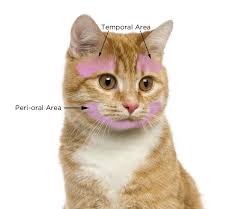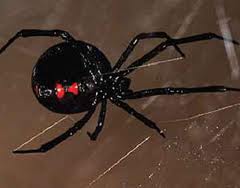You're Petting Your Pets All Wrong!
Dr. Marty Becker, Fear Free
 Dr. Marty Becker explains that you may be petting cats and dogs improperly. This is especially important if you're a veterinarian. The Fear Free Pets movement wants us to rethink how we interact with our four-legged friends.
Dr. Marty Becker explains that you may be petting cats and dogs improperly. This is especially important if you're a veterinarian. The Fear Free Pets movement wants us to rethink how we interact with our four-legged friends.
Developed Dr. Marty Becker, the Fear Free initiative aims to "take the 'pet' out of 'petrified'" and get pets back for veterinary visits by promoting considerate approach and gentle control techniques used in calming environments.
Utilization of Fear Free methods and protocols leads to reduction or removal of anxiety triggers, which creates an experience that is rewarding and safer for all involved, including pets, their owners, and veterinary health care teams. The end result? Calmer, more accepting patients, more compliant clients and better veterinary care.
Dr. Becker states he is not gifted like Temple Grandin and has not had a gift since he was a child that is now manifesting in his later part of life. He is just somebody who was moved by a veterinary behaviorist into taking action to reduce fear, anxiety and stress and to look at the emotional well-being of animals.
Years ago, an animal behaviorist once said to him, "There's no other way to tell you this, but you're petting dogs wrong."
Dr. Becker was shocked. How do you pet a dog wrong when you've petted a dog since you were a little kid and it seemed to work? But what he was doing, which is what most people do in the veterinary profession, is to approach a dog from the front, because they love dogs. So when they see a dog, they get excited and want to know about the dog, it's breed, etc. Next they lean down over it and start petting it on the head or the first spot they can reach.
 Well, first of all, dogs have great peripheral vision (meaning they can see things on the sides by their eyes when looking straight ahead). However, they have really terrible vision above them.
Well, first of all, dogs have great peripheral vision (meaning they can see things on the sides by their eyes when looking straight ahead). However, they have really terrible vision above them.
Look around you - you can probably see things on the ceiling or in the air, without looking directly up, because we can see above. However, when you approach a dog and go to pet it from above, they tend to snap because they can't see.
Places you don't want to pet a dog are on the top of the head. You don't want to pet them down the dorsal midline either (just between the shoulder blades). These are mistakes Dr. Becker made frequently.
The places dogs like best to be petted are down the side of the neck, the side of the chest and at the base of their tail. And when you pet them, make it more like a little scratch.
For cats, Dr. Becker already knew not to touch their stomachs. But they also don't like to be touched on their neck or down the dorsal midline. However, they do like to be petted at the base of their tail.
 The three best spots to pet a cat are on the lips, the chin, the hairless areas above their eyes and the cheeks as long as you don't touch their whiskers.
The three best spots to pet a cat are on the lips, the chin, the hairless areas above their eyes and the cheeks as long as you don't touch their whiskers.
They are now teaching people in the veterinary community when petting cats, "Don't go below the neck unless you're engaged!"
Another practice in the veterinary community they are changing is when you clean a cage holding an animal; don't place them in another clean cage with a new litter box and new food bowl. This is wrong. Cats love to establish their scent and they have already established their scent in this little area and you are stripping it all off and putting them in an area with no scent, which causes an immense amount of stress.
The proper way is to spot clean and to use products that don't destroy the olfactory neurons by using new hydrogen peroxide cleaners that are like killing machines, which just break down into water and oxygen.
Remember when cats were sent home after a vet visit or stay? As soon as the cat entered the home and was released from the carrier the other cats would attack it? There's a better way. Now we know to leave them in the carrier when you get home and place the carrier on opposite sides of the door from the other animals. Then you take a towel and wipe down all the cats, including the one returning home, with the same towel so that everyone feels and smells a little different.
Visit Fear Free Happy Homes for tips on making your home fear free and to locate a Fear Free Veterinarian near you. Go to Fear Free Pets to become certified.
Listen and Explore the Fear Free Expert Series
Black Widow Spiders Poisonous to Pets - Dr. Debbie
 Pet Threats Come in All Sizes
Pet Threats Come in All Sizes
Our doggie family ambled along on our typical morning walk along the community trail. With a family of two Labradors and a Yorkie mix, my crew is always up for fun and they investigate anything and everything.
Sometimes it's a crunchy cockroach snack or the fortunate edible remnant in a discarded candy wrapper. My dogs enjoy the "date game" where they snatch up shriveled fruit fallen from date palms, crunching away before the mom and dad notice. And sometimes it's a half-hearted game of chase with an unsuspecting rabbit. A more gut wrenching episode once involved my Labrador ingesting a rat with tail slipping down his gullet like a piece of spaghetti. My furry kids are professional trouble finders so I try to keep a watchful eye for things that make them go "Oooh," and make me go "Ugh!"
Female Black Widow Spider
While walking along the pedestrian pathway we came upon today's discovery - spiders and lots of them living in the recesses of a block wall. The hairs on my arm stood up as my Yorkie mix approached their lair. I recognize what these spiders are and what could happen to a 16-pound pup.
The long legged spiders were over 1 1/2" in length, black in color with a distinctive orange hourglass mark on its underbelly. Meet the black widow spider, a common arachnid found in every state in the U.S. except Alaska.
The Black Widow Bite
Black widow spiders contain a potent neurotoxin that causes pain, swelling and can lead paralysis. Female black widows are the dangerous ones, while the males rarely ever bite. While some black widow bites go unnoticed, others cause immediate pain at the site or result in pain at the nearest lymph node. Pain intensity reaches its maximum within 1 to 3 hours after the bite, but can last up to 48 hours.
Symptoms of a black widow bite appear within 8 hours after bite an include muscle twitching, restlessness, rigid abdomen and difficulty breathing. Symptoms may result in high blood pressure, a racing heart rate, seizures and collapse. Dogs are more resistant to a black widow bite, but still can suffer serious illness. Cats are very sensitive to the toxins and can suffer fatalities.
Symptoms of black widow bite include:
 - Pain and numbness around bite site
- Pain and numbness around bite site
- Anxiety
- Racing heart rate
- Muscle pain and stiffness, especially abdominal muscles
- Difficulty breathing
- Paralysis
- Seizures
Treatment for Black Widow Spider Bite
Call your veterinarian if you suspect your pet was bitten by a black widow. Initial home emergency care of a black widow bite may include ice packing bite area and oral antihistamines like Benadryl. Your veterinarian will need to see your pet to evaluate and treat the more serious symptoms. Treatment may include medications to control muscle spasms and seizures. Blood pressure and blood sugar are monitored and intravenous fluids may be administered. An antivenin is available for more serious confirmed cases of black widow bite.
Prevention
Avoidance of spider habitats is the best prevention. These eight-legged critters favor dark recesses both indoors and outdoors. Look for cobwebs with a distinctive funnel-shaped opening at the top. And keep a close eye on your dog when out exploring. Inquire about spider control methods with your pest control company.
With pet noses so close to web level, the risk of black widow bites is just natural to being a dog. Our morning spider encounter ended without any drama, thankfully. After one firm "No!" my doggies retreated to unearth some other lucky find. Here's to hoping it doesn't involve any rats or bugs next time.
Featured veterinarian known as "Dr. Debbie" on national pet radio program, Animal Radio. Ebook author of "Yorkshire Terriers: How to Be Your Dog's Best Friend"; "Pugs: How to Be Your Dog's Best Friend"; "Mini Schnauzers: How to Be Your Dog's Best Friend"; and "Shih Tzu: How to Be Your Dog's Best Friend." Dr. Debbie's books.
Visit Website
A Million Reasons Why I'm A Pet Parent
Robert Semrow, Listomania
 Many of us have been engaging in a familiar discussion in the pet world since a Canadian judge ruled that a dog is a dog and shall legally, at least in Canada, only be considered property. In fairness, the judge had some good points. So does this judge's ruling end the discussion? Maybe in Canada, but we've all got neighbors we ignore and this topic continues to rage on.
Many of us have been engaging in a familiar discussion in the pet world since a Canadian judge ruled that a dog is a dog and shall legally, at least in Canada, only be considered property. In fairness, the judge had some good points. So does this judge's ruling end the discussion? Maybe in Canada, but we've all got neighbors we ignore and this topic continues to rage on.
This is a ridiculous argument over how someone views themselves; do they say they are a pet parent, pet guardian, pet owner or pet friend? Does it really matter? I could go on for days about why I am a proud pet parent, but this is a short segment.
The definition of a parent is to protect or to guardian with love and discipline. So why the fuss about them being called property or possessions? Let me know count the ways till Hal cuts my mic...
Possessions don't have heartbeats, they don't have souls, don't need daily care, don't have minds, don't laugh, don't smile, don't snuggle, don't eat, don't drink water, don't care for humans, don't give humans freedom from physical and mental challenges, don't visit hospitals, don't put others before themselves and they don't care if you are happy or sad or they can make you smile or warm your heart.
Property is often easily replaceable. I will not put my life at risk for my property, but I will gladly do so for my family.
I will stop what I am doing for the sake of my pets, but not my possessions. I care about my pets' physical, emotional and behavioral health. I am never alone with my pets around and I can find joy in anything involving my pet, just like my children. I receive friendship, companionship and inspiration in my pet, but not from my possessions. We provide for, teach and give them medical care and they teach and care for us as well.
 Property exists while pets thrive...
Property exists while pets thrive...
I'm a pet parent because I am willing to treat and care for my animal friends as I would another member of my family. And no, not at the expense of human family members.
What matters is not that I call myself a proud pet parent, but that I care for amazing beings and value them more than possessions. If you consider yourself something else, that's fine too. The real issue is that we live up to the needs that the pets in our lives deserve.
Speaking of that, our pets deserve to have a plan in place so if our lives change due to medical, work or personal issues, they are not left in limbo or their existence left for a court to decide.
Put me down as a very proud and blessed pet parent. My pets have changed my life more than it ever could be by a possession.
Now that I think about, your honor, you may be right, My Pets adopted my family and me. I don't own them, but I am very blessed to acknowledge that they own me.
Let us know if you are pet parent on our Animal Radio Facebook Page.
Visit Website
Animal Radio News - Lori Brooks
 Dogs Don't Like Baby Talk
Dogs Don't Like Baby Talk
Most of us use baby talk to our babies and our dogs, but maybe we should just limit it to puppies because it turns out older dogs aren't so impressed with our baby talk. A study showed that baby talk, also known as dog-directed speech when you're conversing with your dog, got a big response from puppies, but older dogs really couldn't care less. The study's researchers had 30 female volunteers look at photographs of dogs while reading standard dog-directed phrases, like "Who's a good boy?" and "Hello cutie!" The volunteers also read the doggie praise to a human. The researchers found that women used the higher-pitched, singsong baby-talk tone when reading the passages to the photos, making their voices 21-percent higher when reading to the puppy images. With the human, they spoke in their normal voice. That was more or less expected. But when the researchers played recordings of the women's voices to ten puppies and ten adult dogs at a New York animal shelter, there was a stark contrast. The puppies went wild when they heard the baby talk, barking and running toward the loudspeaker, crouching down in a pose used to start a round of play. However, when researchers played the same phrases using the women's normal tone of voice, the puppies weren't nearly as enthused. The adult dogs, however, were a different story. They didn't care at all. They had a quick glance at the speaker and then ignored it. There's no clear reason why the puppies reacted so strongly to the baby talk and the mature animals didn't. It's possible the higher-pitched tones stimulate a special response in the puppies, much like human babies.
 Mailman Builds Ramp So Elderly Dog Can Continue to Greet Him
Mailman Builds Ramp So Elderly Dog Can Continue to Greet Him
Every morning, Tashi the black lab went outside to greet his local mailman, Jeff Kramer, a totally dog-loving mailman. When Tashi got up there in age, however, his joints became pretty stiff and he didn't get around as well as he used to. For Tashi to go up and down their front porch steps, his parents had to pick him up and carry him and he weighed 70 pounds! Enter Jeff the mail carrier/carpenter. On a day off, he popped over to Tashi's house and built a new ramp for the aging lab and his humans. It turned out that Jeff had a senior dog in the past that he had made a ramp for at his home and thought Tashi would benefit from one as well.
Pet Owners Fined for Animals Left Out in Cold
In Yakima, Washington, authorities are giving a warning to unkind pet owners after receiving reports of animals being left outside in frigid temperatures. Pet owners could face a misdemeanor charge for animal neglect if their pets are found in distress and given a fine from $250 to $5,000 depending on the severity. Yakima police say, "The intent really isn't to criminalize or to give people tickets or citations," but that the welfare of the animal is most important so they try to work with the pet owner. All pets left outside that they check on must have food, water and shelter that will keep them warm enough in freezing weather conditions.
 Cats Share iPads With Each Other
Cats Share iPads With Each Other
It turns out you can teach an old cat new technology. Felines being cared for at the Regina Humane Society in Saskatchewan, Canada, get to play interactive games on iPads, usually games that feature moving fish, mice or insects that the cats try to "catch" with their paws. Of course cats love to hunt and stalk things and what the programs do is give shelter cats the opportunity to do that on the iPads. The humane society started experimenting with the cat-oriented iPad games, which are downloaded from iTunes. The cats have other toys to play with, but the iPads are just one method they use to keep the cats happy and calm. Beyond benefitting the shelter cats, tablets are also a great way to get younger human volunteers engaged in playing with the cats. The human in charge of the iPad program at the shelter said the most surprising thing was how good the cats are at sharing. They usually use the iPads in communal areas where there are multiple cats roaming freely and he said the cats will gather around it and almost take turns playing and chasing the images on the screen. Many times that leads to them playing with each other and increasing their socialization skills.
 There's a Recipe For Cats and Dogs To Get Along
There's a Recipe For Cats and Dogs To Get Along
Cats and dogs really can get along to the point that they'll play hard together, drink water from the same bowl and cuddle on the couch, according to research led from Tel Aviv University. They discovered the recipe for success is to adopt the cat first and introduce a dog while both pets are still young. In homes where the cat and dog are mates, the research suggests they've managed to correctly read each other's body cues.
 Listen to the entire Podcast of this show (#1154)
Listen to the entire Podcast of this show (#1154)





